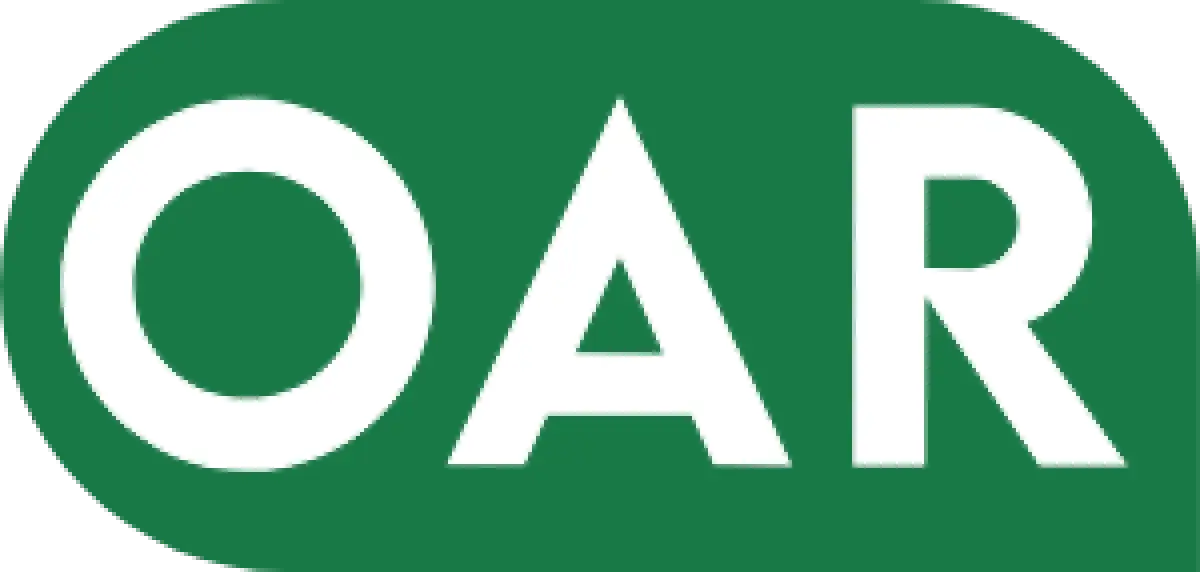Accounts Payable vs Accounts Receivable Key Differences Explained
Feb 08, 2024

Both accounts payable and accounts receivable are integral components of a company's balance sheet, representing crucial facets of its financial transactions.
In this article, we will delve into the detailed differences between these two financial concepts, uncovering their distinct roles, functions, and implications for businesses. By comprehending the intricacies of accounts payable and accounts receivable, organisations can make informed decisions, streamline financial processes, and fortify their financial standing in the competitive business environment.
Key Takeaways
- Understanding the differences between accounts payable and accounts receivable is crucial for effective financial management, enabling businesses to make informed decisions, streamline processes, and strengthen their financial standing.
- The primary distinction between accounts payable and receivable lies in the cash flow direction; accounts receivable involves incoming payments from customers, while accounts payable involves outgoing payments to suppliers.
- Optimising payables involves negotiating favourable payment terms with suppliers, utilising early payment discounts, and implementing a robust invoice approval process to reduce costs and prevent delays.
- On the receivables side, businesses can enhance cash flow by offering early payment discounts to customers, establishing clear credit policies, and leveraging technology such as automated invoicing and online payment systems to manage receivables efficiently.
Accounts Receivable vs Accounts Payable: A Table With Key Differences
Accounts receivable refers to the outstanding payments that a company is entitled to receive from its customers for goods or services provided on credit. It represents the money owed to the business by external parties.
On the other hand, accounts payable represents the company's outstanding obligations to its suppliers and vendors for goods or services received on credit. It shows the company's short-term liabilities.
The primary distinction lies in the cash flow direction: accounts receivable involves incoming payments, while accounts payable involves outgoing payments. While both are crucial for assessing a company's financial health, understanding these differences is essential for effective financial management. So, in the below table, you will find the key differences displayed side by side:
| Accounts Receivable | Accounts Payable |
| Money owed to the company | Money owed by the company |
| Customers are debtors | Suppliers are creditors |
| Result of credit sales | Result of credit purchases |
| Asset on the balance sheet | Liability on the balance sheet |
| Increases with sales | Increases with purchases |
| Collected by the company | Paid by the company |
| Invoiced amount | Invoice amount due |
| Follows credit terms | Follows payment terms |
Accounts Payable: In-Depth Analysis
Accounts payable refers to a business's financial obligation to suppliers or vendors for goods and services received on credit. The process involves recording and tracking all invoices and bills received, documenting the due dates, and ensuring timely payments. This function is vital for maintaining positive supplier relationships and avoiding late payment penalties.
The accounts payable department is responsible for verifying the accuracy of invoices, confirming that goods or services were received, and obtaining necessary payment approvals. It plays a crucial role in a business's overall cash flow management, as effective management of payables contributes to maintaining healthy working capital. Managing accounts payable effectively requires collaboration between different departments, including procurement, finance, and vendor management. Periodic audits are conducted to detect any irregularities or discrepancies, contributing to internal control measures within the organisation.
Overall, the important points of accounts payable are provided below:
- Concerns liabilities, as it represents the company's obligation to make payments.
- Occurs after the receipt of goods or services, when the company has received credit terms from its suppliers.
- Negatively affects cash flow when payments are made to suppliers.
- Aims to manage and settle obligations to maintain positive relationships with suppliers.
- Requires effective cash flow forecasting and payment scheduling.
- It may reduce liquidity when payment deadlines are approaching.
- Appears on the liabilities side of the balance sheet.
- Carries the risk of strained supplier relationships if payments are delayed.
- Regularly reviewing ageing payables ensures timely payments and avoids late fees or strained relationships with suppliers.
- Affects working capital negatively when payables turnover is prolonged.
- It may result in legal consequences if payment obligations are not met.
- Typically set by suppliers based on negotiations and industry standards.
- High accounts payable may suggest favourable credit terms but may strain liquidity.
Accounts Receivable: In-Depth Analysis
In financial accounting, receivables refer to the amounts owed to a business entity by its customers or clients as a result of credit sales. These are essentially claims or rights to receive cash in the future, typically within a specified time frame. The concept of receivables is crucial in reflecting the creditworthiness of a company and its liquidity position.
Accounts receivable, a common form of receivables, arise when goods or services are delivered to customers on credit terms. It represents the monetary value of outstanding invoices yet to be settled. The ageing of receivables is often analysed to assess the effectiveness of credit control measures and the likelihood of timely collections.
Receivables are classified as current assets on a company's balance sheet, which are expected to be converted into cash within one year. Companies adopt various methods, such as factoring or discounting, to expedite the conversion of receivables into cash. Timely management of receivables is essential to maintain a healthy cash flow and ensure the smooth operation of business activities.
Bad debts may arise when customers fail to honour their obligations, necessitating the establishment of an allowance for doubtful accounts to reflect the estimated portion of receivables that may not be collected. Additionally, receivables can be influenced by factors such as economic conditions, customer creditworthiness, and industry-specific trends, all of which impact the overall financial health of a business.
The most important terms and points to know about accounts receivable are provided below:
- Involves assets, as it reflects the company's right to receive payment.
- Arises after the sale of goods or services, when the customer is granted credit terms.
- Positively impacts cash flow when payments are received from customers.
- Aims to track and collect outstanding payments to maintain healthy cash flow.
- Requires efficient credit management and timely collections.
- Enhances liquidity when payments are received promptly.
- Appears on the assets side of the balance sheet.
- Involves the risk of bad debts if customers fail to pay.
- Regular monitoring of ageing receivables is essential to identify potential issues and prompt collection efforts.
- Influences working capital positively when receivables turnover is efficient.
- It may lead to legal action to recover outstanding debts.
- Dictated by the company based on its credit policies.
- Directly linked to the sale of goods or services on credit terms.
- High accounts receivable may indicate strong sales but pose a cash flow risk.
Contact Our Accounts Receivable Experts Today
Strategies for Payables and Receivables Effective Management
Effective management of payables and receivables is crucial for financial stability and operational efficiency in any business. To optimise payables, companies can negotiate favourable payment terms with suppliers, taking advantage of early payment discounts to reduce overall costs. Implementing a robust invoice approval process helps prevent errors and delays in payments. Streamlining the procurement process and centralising vendor management can enhance efficiency in managing payables.
On the receivables side, businesses can accelerate cash flow by offering discounts for early payment to customers. Establishing clear and concise credit policies aids in assessing customer creditworthiness, reducing the risk of late payments or defaults. Utilising technology such as automated invoicing and online payment systems enhances the speed and accuracy of the receivables process. Regularly monitoring accounts receivable ageing reports allows businesses to identify and address overdue payments promptly.
Implementing a comprehensive cash flow forecasting system enables companies to anticipate and manage fluctuations in payables and receivables. Diversifying funding sources and exploring alternative financing options can provide additional liquidity for managing both ends of the financial spectrum. Businesses can also consider invoice factoring or discounting to convert receivables into immediate cash.
Maintaining open communication with both suppliers and customers fosters strong relationships, facilitating smoother transactions and problem resolution. Periodic reviews of payment and collection policies ensure alignment with industry standards and evolving business needs. Continuously updating financial software and leveraging analytics enables businesses to make data-driven decisions for effective payables and receivables management.
Challenges and Risks
Managing payables and receivables presents businesses with various challenges and risks that require effective strategies for optimal financial control.
- One key challenge is the timely payment of invoices, which can impact relationships with suppliers and result in late payment penalties. To mitigate this risk, businesses should implement robust accounts payable processes, including invoice tracking systems and regular payment reviews.
- On the receivables side, delays in customer payments can strain cash flow and hinder operational efficiency. Adopting proactive measures such as clear payment terms, regular follow-ups, and offering early payment discounts can help accelerate collections. Additionally, businesses should conduct thorough credit assessments to minimise the risk of dealing with clients with poor payment histories.
- Another crucial aspect is the management of currency risks, especially for businesses engaged in international trade. Utilising hedging instruments and staying informed about currency market trends can help mitigate the impact of exchange rate fluctuations on payables and receivables.
- In terms of accounts receivable services, outsourcing these functions to specialised agencies can streamline the collection process. These services often include credit risk assessment, invoice reconciliation, and timely follow-ups on outstanding payments. Outsourcing accounts receivable allows businesses to focus on their core operations while ensuring efficient financial management.
- Moreover, embracing technological solutions such as electronic invoicing and automated payment systems can enhance accuracy and speed in the payables and receivables processes. Leveraging data analytics for predictive analysis can provide insights into payment patterns, helping businesses anticipate and address potential challenges.
Overall, a comprehensive approach to managing payables and receivables challenges involves implementing effective processes, leveraging technology, and adopting proactive strategies to minimise risks and optimise financial operations.
Contact Us to Outsource Your AR Management
Conclusion
In summary, the comparison between accounts payable and accounts receivable underscores their inverse roles within the financial framework of an organisation. Both components are integral to maintaining a balanced and effective financial management system, ensuring the smooth operation of business transactions.
 Author: Giles Goodman, Commercial Intervention Officer OAR
Author: Giles Goodman, Commercial Intervention Officer OAR
Giles Goodman is the definitive expert in cross-border commercial debt collection, mediation, legal recovery, and accounts receivable. Based in London, his 25 years of experience provide a global perspective on preventing defaults and efficiently managing overdue accounts. Giles’s insights and analyses empower business owners worldwide with strategic approaches to financial management and recovery.

Take control of your cash flow.
Streamline Vendor Onboarding & Boost Payments Worldwide.
Contact Us
OAR | Copyright 2025


